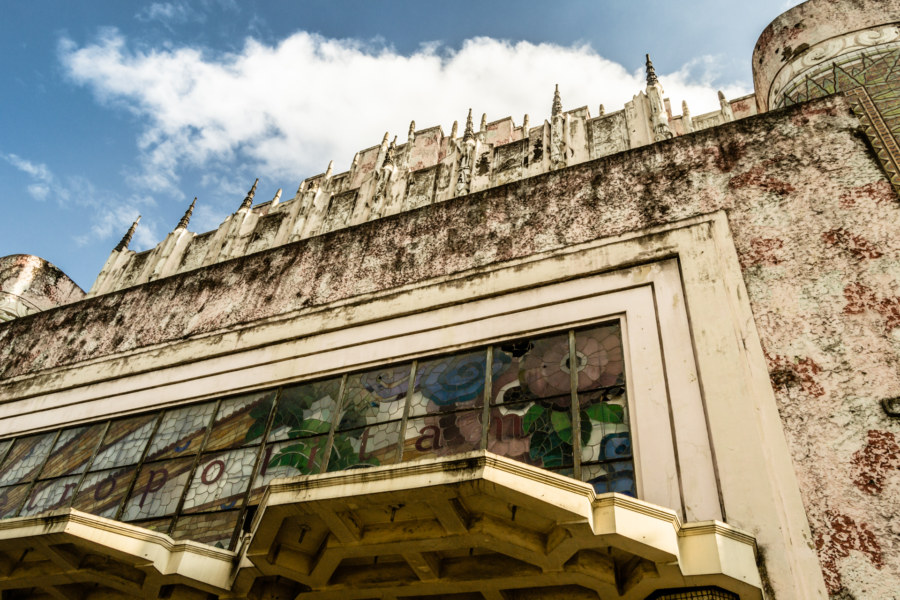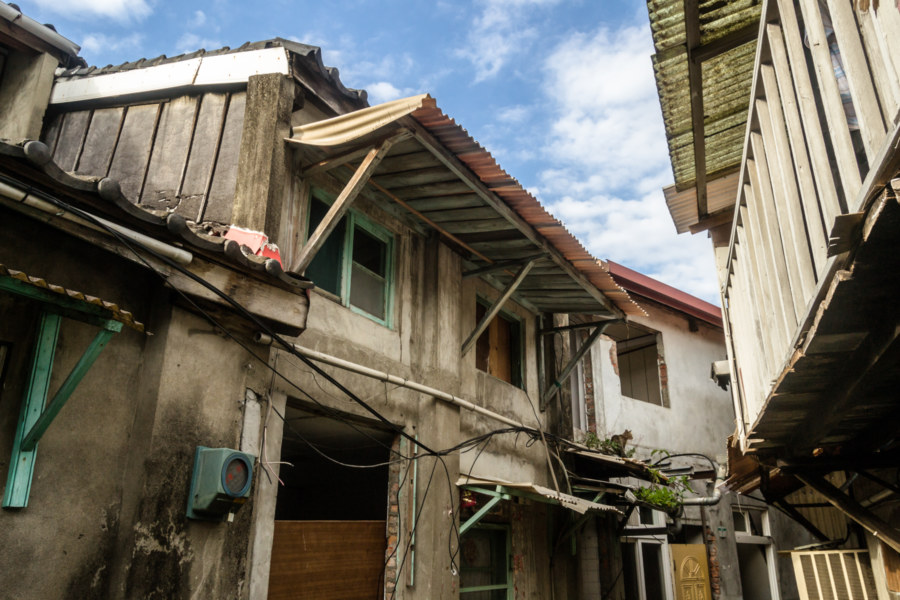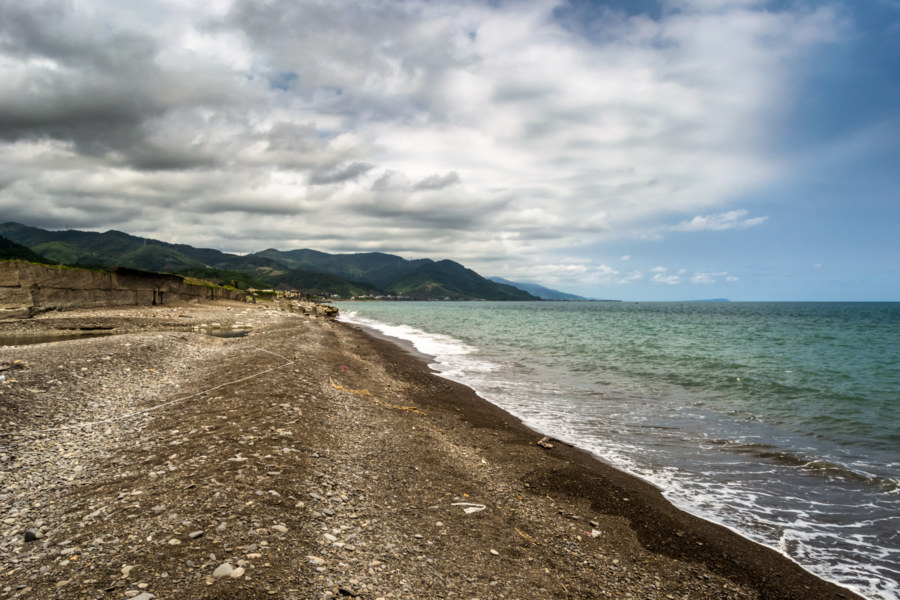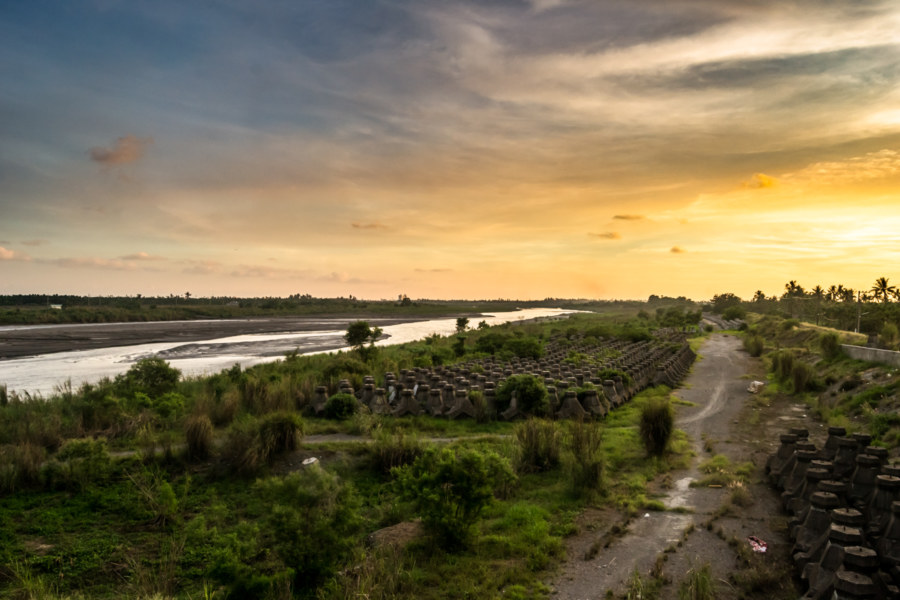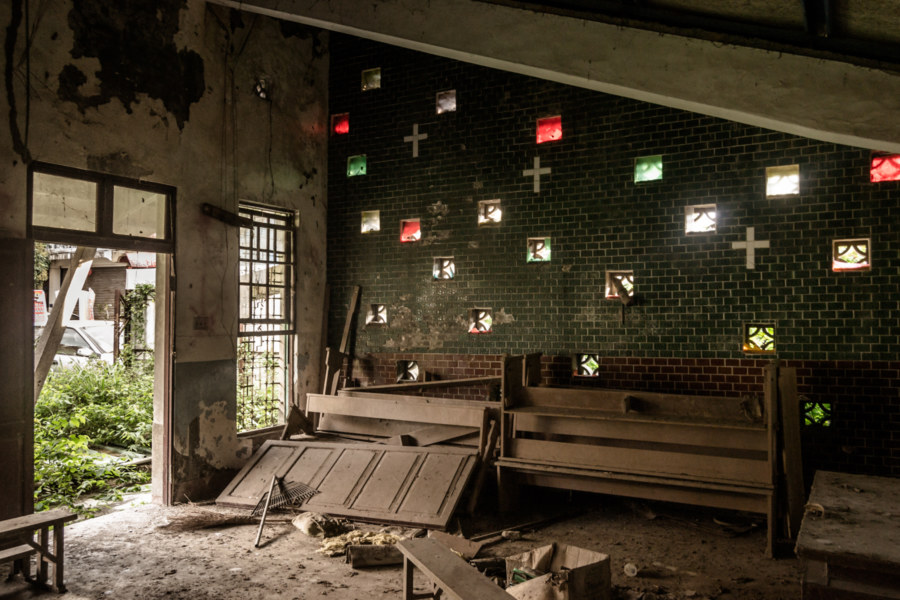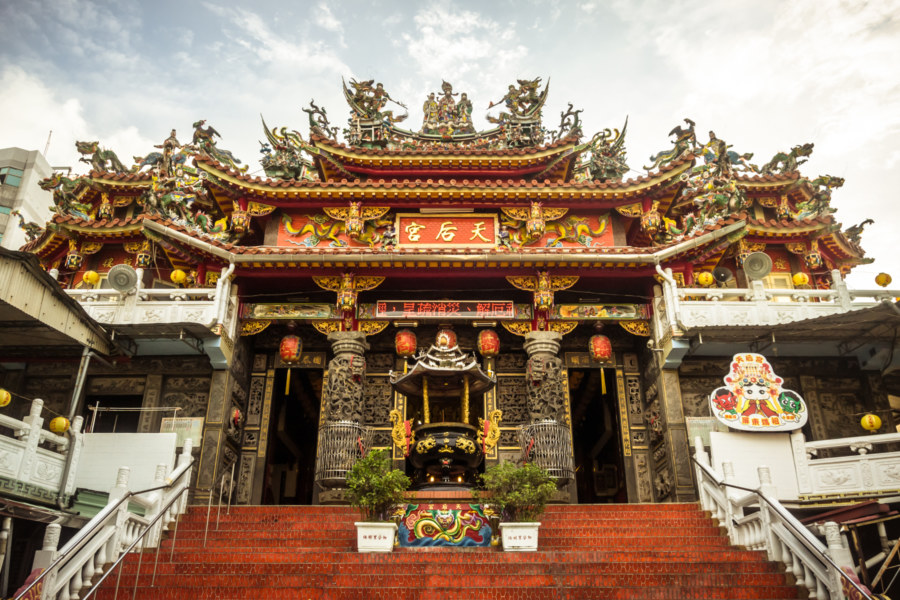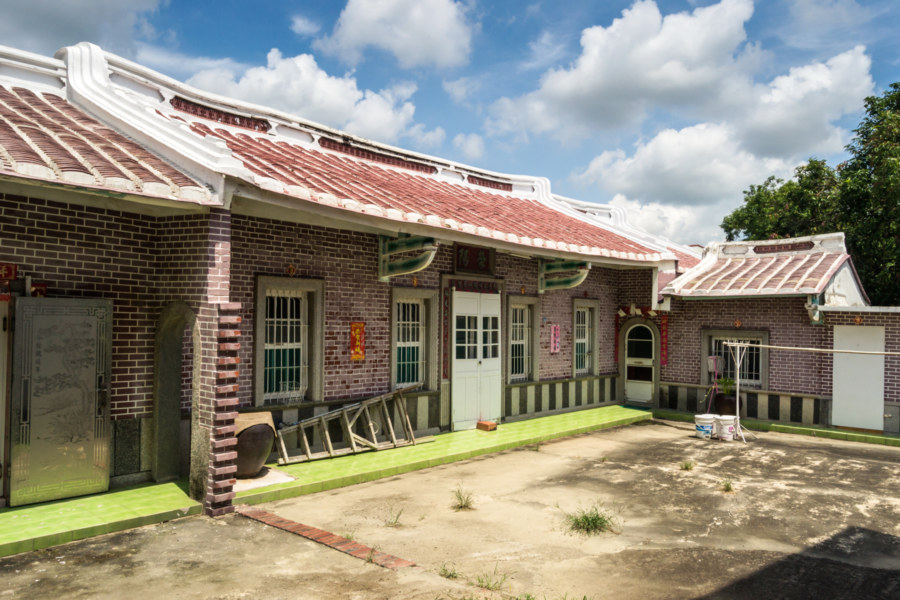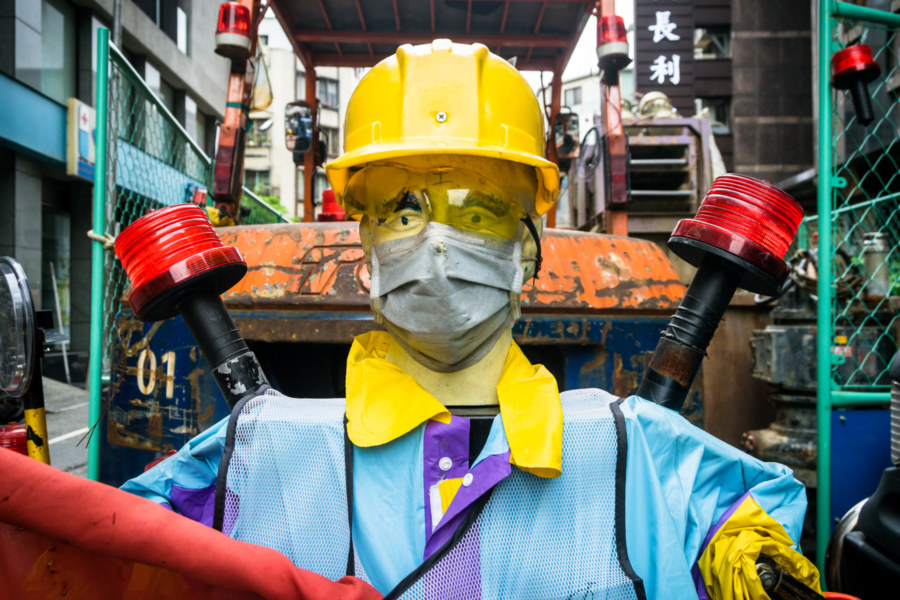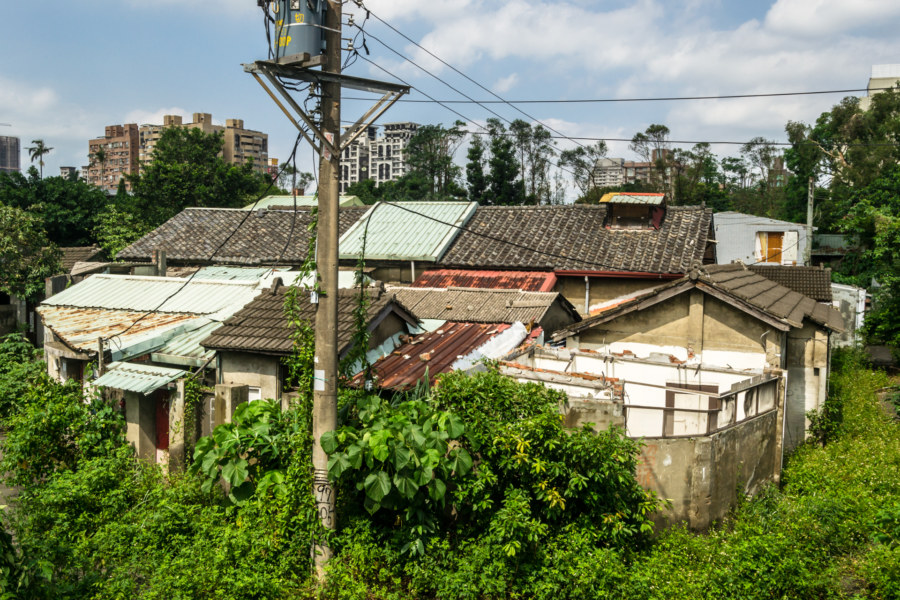Manila Metropolitan Theater, or simply the Met, is the largest and most famous Art Deco theater in Manila. Designed by the prolific Juan M. Arellano, the Met officially opened in 1931 and soon became a focal point for Manila’s high society. Like most of the rest of the city Manila Metropolitan Theater was heavily damaged in the Battle of Manila. The post-war era wasn’t kind to the Met; it fell into disrepute for decades until restoration efforts were undertaken in the late 1970s. Ownership disputes led to another phase of neglect in the mid-1990s and today it remains abandoned despite occasional efforts at rehabilitation.
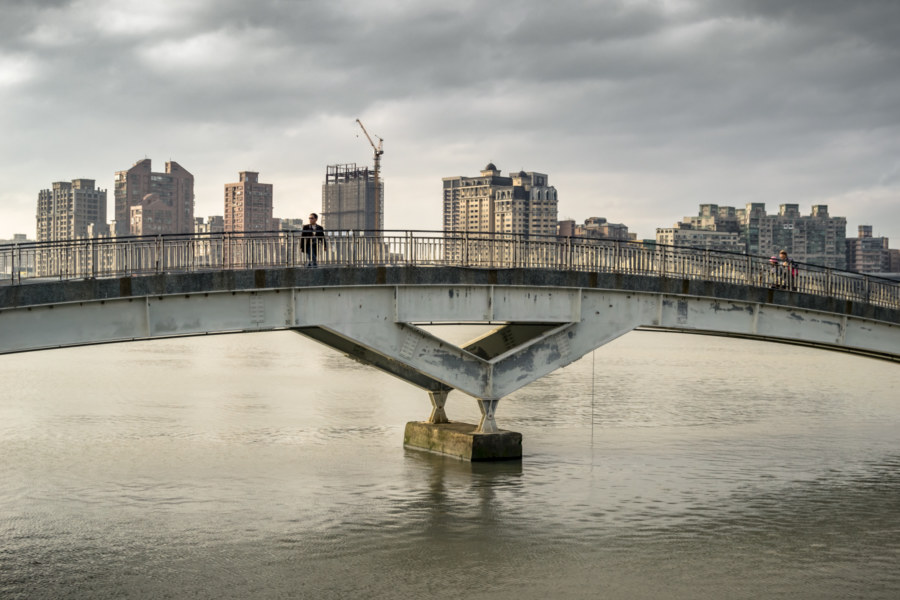
Exploring the urban condition: the buildings that tower over all, the rhythm of the streets, and the fleeting moments of humanity in the midst of the concrete jungle. See also: urbex.
Subterms
Adjacent Terms
Fushui Village 富水里
Fùshuǐ Village (富水里) is located on a small parcel of land at the southern edge of Zhongzheng, Taipei, just to the west of Gōnggǔan Station (公館站). Technically the village contains the now-abandoned Jiahe New Village (嘉禾新村), a military dependents’ village previously profiled on this blog, but most common uses of the name refer to the illegal settlement running along Yǒngchūn Street (永春街), just inside the riverside wall. This settlement of around a hundred homes, like nearby Treasure Hill (寶藏巖), was supposed to be destroyed around the turn of the millennium, but plans have gone awry, and its fate remains unclear.
Yonghe Theater 永和大戲院
Yonghe Theater 永和大戲院 is one of dozens of derelict movie theaters in Greater Taipei. Like hundreds of other theaters all around Taiwan this one went out of business in the early years of the new millennium due to changing consumer habits, a topic already discussed at length in previous explorations of places like Datong Theater 大同戲院 in Taitung City and Xinming Theater 新明戲院 in Zhongli. Whereas theaters in the rest of the country are often left to the elements, sky-high property values in the Taipei area strongly incentivize owners to do something with these decaying buildings. In this instance the front of the old theater was been converted for the use of into a 7-Eleven convenience store and an Italian restaurant by the name of Lan De Pasta House 嵐迪義大利麵. I wonder whether patrons of these establishments realize what looms overhead?
Southern Taiwan Ride 2015: Fangliao to Manzhou
Last summer I embarked upon a weeklong bicycle tour in the deep south of Taiwan. I began in Tainan, cycled through Kaohsiung to Pingtung City, spent a day hanging out, and then continued on to Fangliao, where the coastal plain narrows to a thin wedge between the mountains and the sea. There is only one road leading south from here—which meant I covered a lot of ground I had already seen while riding all around Taiwan in 2013. I didn’t mind repeating that beautiful stretch of coastline and, actually, I was looking forward to checking out some places I had breezed by on that first big tour, particularly in Fangshan and Hengchun.
Southern Taiwan Ride 2015: Pingtung City to Fangliao
After spending a day riding around Pingtung City I was ready to hit the road again. With no specific destination in mind—only an intention to head in the direction of Hengchun, far to the south—I checked out of the vintage homestay I lodged at the previous night, stopped at Eske Place Coffee House for a delicious and healthy vegetarian breakfast, changed into cycling wear, and exited the city to the east. I knew almost nothing about where I was headed or what I might see on the third day of my southern Taiwan ride in 2015. I only had one stop planned in advance: a hospital in Chaozhou rumoured to be abandoned. I didn’t know it at the time but I would spend almost the entire day riding through the historic Hakka belt of Pingtung.
Chaozhou Jiukuaicuo Catholic Church 潮州九塊厝天主堂
While I was out riding in southern Taiwan last year I chanced upon an abandoned church by the roadside in a small village outside of Chaozhou, Pingtung. I only spent about ten minutes there and didn’t shoot many photos but have since realized that the story to tell is interesting enough to devote a full post to it. The formal name of this place is Jiǔkuàicuò Catholic Church 九塊厝天主堂, though this is commonly prefixed with Chaozhou to distinguish it from the many other villages with the same name in Taiwan. Details are scant but I should be able to provide a broad overview of how this church came to be here—and why it was left to the elements.
Postcards From Pingtung City 屏東市明信片
One of the pleasures of bicycle touring in Taiwan is the freedom to change plans on impulse. On my second day of a trip down south in June 2015, having previously cycled across Kaohsiung from Tainan, I opted to hang out and see more of Pingtung City. A dire weather forecast calling for bouts of torrential rain had already introduced some uncertainty, but I was also curious about this city of 200,000, about which almost nothing is written in English. Finding an interesting place to stay sealed the deal—and so I checked out of a grimy hotel near the train station after breakfast, moved my stuff to the new place, and spent the day exploring the administrative center of Pingtung, the southernmost division of Taiwan.
Southern Taiwan Ride 2015: Tainan to Pingtung City
Bicycle touring is one of the best ways to experience Taiwan. I don’t have an opportunity to go touring as much as I’d like but managed to find some time last year, in June of 2015, to embark upon a multi-day bicycle trip around southern Taiwan. My intention was to cover some of the same territory that I had rushed through on my first bicycle trip down south in 2013. I ended up racing a typhoon from Kenting to Taitung City that year—so the chance to explore the backroads of Pingtung at a more relaxed pace really appealed to me. I started my journey in Tainan, my favourite city in Taiwan, and cycled through Kaohsiung to Pingtung City, putting about 70 kilometers behind me. Gathered here are some photos from the first day of this trip, continued here.
Taiwan Road Safety Dummies 1 台灣的工程用假人一號
Road safety dummies are a distinctive feature of the streets of Taiwan. In Chinese they are generally known as engineering dummies 工程用假人 (pinyin: gōngchéngyòng jiǎrén), warning dummies 警示假人 (jǐngshì jiǎrén), or, more formally, electric flag-bearers 電動旗手 (diàndòng qíshǒu). According to law these robotic figures must be setup at all roadside construction sites to provide some measure of protection for workers as well as warn passing motorists and pedestrians of potential hazards. When hooked up to a car battery their stubby arms pump up and down, waving flags and other objects to direct traffic. Construction companies typically decorate these dummies with safety vests and hardhats, though it is not common for workers to express some creativity and personalize their dummies. Some of them even have individual names and histories! The rest of this post features photographs of some of the many road safety dummies I have encountered over the years.
Jiahe New Village 嘉禾新村
Jiahe New Village (嘉禾新村) is one of more than 800 military dependents’ villages (Chinese: juàncūn 眷村) built in Taiwan in the late 1940s and 1950s to provide provisional housing for KMT soldiers and their families fleeing from the Chinese Civil War. Approximately two million people crossed the Taiwan Strait from China from 1945 to 1949, bolstering an existing population of approximately seven million. More than 600,000 of these Chinese immigrants ended up in military villages like this one in Zhongzheng, Taipei, which was forcibly abandoned only a couple of years ago as part of a wave of urban renewal projects sweeping the nation.
